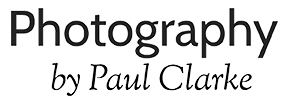One of the lesser known things about digital photography is that the camera often sees more than it’s letting on. Generally speaking, cameras can produce two types of digital image: “RAW” and “JPG” (or JPEG, jpeg or .jpg but let’s not get hung up on that…)
JPG files are images that the camera has done a bit of internal processing on for you. Generally this means nudging the colours a little to give a natural look (or unnatural, depending on your settings) and compressing the image to give you a smaller and more manageable file size.
RAW files, on the other hand, are pretty much as they suggest – the raw digital information from the sensor, uncompressed, and with little or no in-camera processing. They are much bigger; around 25MB instead of 3 or 4, from a typical professional camera.
So why use them? Here, in two pictures, is why.
The excellent Tracy Howl is an exceptional event photographer: she gets under the skin of an event; front of house, backstage, on the stage, and right through the kitchens…
And here’s a frame captured during a fast run through a busy kitchen. Chef doesn’t tolerate any hanging around; it’s a question of making the best of the blazing lights and heaters, and getting the heck out before the waiters run you over.
You see? It’s hot in there. Hot and yellow… The frame is pretty undistinguished; warm, faded and monotone – with little obvious detail. But in reality, what Tracy’s done here is very distinguished…
The camera’s sensor has actually captured much more than it’s letting on at this stage. Because Tracy carefully set the exposure to ensure that the most important bits (the food, the pan and the chef’s faces were bang in the middle of the exposure range from light to dark) the edit afterwards allows miracles to happen.
That blazing yellow pulls back in the edit to reveal rich colours. Your eye can see them; indeed the camera can also see them, but needs a little persuading sometimes to yield the true picture. The RAW file has a wealth of information that the JPG would simply discard, and the hands of an experienced editor do the job of reconstructing the scene that our eyes would see. And then some.
The final result – BOOM:
So when you think about event photography, also think about file formats and editing. They’re indivisible parts of the very best results.
(Clicking or tapping on the images should open them in a lightbox; you can then navigate between them to compare.)


